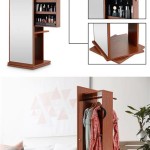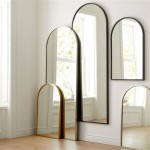Mount TV Behind Mirror: A Comprehensive Guide
Mounting a television behind a two-way mirror offers a unique blend of aesthetics and functionality. This setup allows the television to remain hidden when not in use, preserving the clean lines of a room's design while transforming the mirror into a functional display screen when activated. This article explores the various aspects of achieving this sophisticated integration, from choosing the right components to the installation process and potential challenges.
Choosing the Right Mirror
The cornerstone of a successful behind-mirror TV installation is selecting the appropriate mirror. Standard mirrors are unsuitable for this application. Specialized two-way mirrors, also known as dielectric mirrors, are required. These mirrors are designed to partially reflect and partially transmit light, allowing an image from a concealed screen to be visible. The level of reflectivity and transmissivity varies depending on the mirror's construction and coatings. Higher reflectivity results in a clearer mirror image when the television is off, while higher transmissivity allows for a brighter and more vibrant TV picture when on. Consider the ambient lighting conditions of the room when selecting a mirror. Brighter rooms may benefit from a mirror with higher reflectivity to minimize glare.
Selecting the Appropriate Television
Choosing the right television is crucial for optimal performance. The television's size should be proportionate to the mirror's dimensions, ensuring the entire screen is visible when the TV is on. Brightness is another key factor. Since the image must pass through the mirror, a brighter television is generally recommended, especially for rooms with ample natural light. LED TVs are typically preferred for their slim profile and high brightness capabilities. Consider the television's mounting points and overall depth to ensure compatibility with the chosen mounting system and the space available behind the mirror.
Mounting System Considerations
A robust and secure mounting system is essential for safely supporting the television and maintaining the integrity of the mirror. Several specialized mounts are designed for behind-mirror installations. These mounts often incorporate a framework that allows for ventilation and heat dissipation, preventing overheating of the television. The mount should be compatible with both the television's VESA mounting pattern and the chosen enclosure or frame for the mirror. Ensure the mount is rated to support the weight of the television and consider the accessibility of the television's connections and controls after installation.
Enclosure and Framing
The mirror and television typically require an enclosure or frame to provide structural support and conceal the television's components. This enclosure can be custom-built or purchased as a pre-fabricated unit. The enclosure should be deep enough to accommodate the television, mounting hardware, and any necessary wiring while maintaining a reasonable depth behind the mirror. Ventilation is crucial to prevent heat buildup. The enclosure should incorporate vents or fans to ensure adequate airflow. The frame surrounding the mirror adds a finished look and can be chosen to complement the room's décor.
Wiring and Connectivity
Planning the wiring and connectivity is an important step. Consider the location of power outlets, cable connections, and any other required inputs, such as HDMI or USB. Concealing the wires is essential for maintaining a clean and professional appearance. The enclosure should be designed to accommodate the necessary wiring, and cable management solutions can be employed to keep the wires organized and out of sight. Infrared (IR) repeaters may be required to allow remote control operation of the television through the mirror.
Installation Process
The installation process requires careful planning and execution. Begin by assembling the enclosure and mounting the television securely to the chosen mounting system within the enclosure. Ensure the wiring is properly connected and organized. Next, carefully attach the two-way mirror to the front of the enclosure. It’s crucial to handle the mirror with care to avoid damage. Finally, install the completed unit in the desired location, ensuring it is securely mounted to the wall. Testing all connections and functionality is crucial after installation.
Maintenance and Considerations
Maintaining a behind-mirror TV installation involves keeping the mirror clean and ensuring proper ventilation around the television. Dust and fingerprints on the mirror can detract from the viewing experience, so regular cleaning is recommended. Monitoring the temperature within the enclosure is also important to prevent overheating. Consider the potential for condensation buildup behind the mirror, especially in humid environments. Proper ventilation can help mitigate this issue.

How To Make A Mirror Tv Step By Instructions

Television Framed Frameless Dielectric Mirror Tv

Tv Behind A Mirror Living Room In Bedroom

Television Framed Frameless Dielectric Mirror Tv

Television Framed Frameless Dielectric Mirror Tv

Vision S Flip Around Tv Mount Disguises Your Behind Framed Mirror This Customer Used Model M3 65 Mounted Wall

43 Smart Android Wall Mount Mirror With Hd Television Bathselect

How To Mount Flat Tv On Mirrored Wall

Hide My Tv Home Of Solutions

Television Framed Frameless Dielectric Mirror Tv








